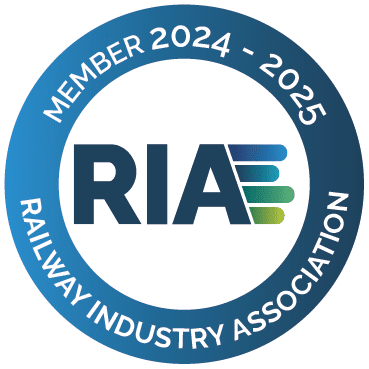Introduction
Following on from IPEX’s industry insight introducing the concept of height adjustable seats to ensure comfort, a journalist contacted IPEX for an article being written for the Sunday Times. The article duly appeared “Passengers left in pain by trains’ ‘concrete’ seats” (subscription required). However, the article did not fully develop the reasons that led to the current situation; something that is discussed in this insight, along with some suggestions for future seat selection.
Figure 1. Rail passengers in Great Britain by year 1830-2016[1]
The scale of the problem
In 1948, the newly nationalised rail industry was in desperate need of help. The lack of investment and over-use of the railways by the Government in WW2 had left the railways in a perilous state and the Government had no choice but to nationalise an industry on its knees. Apart from a small upsurge in the 1950s as holidays began to be taken again post-war, passenger numbers continued to decline, and included a massive reduction due to the Beeching cuts, and then, following a small resurgence with the introduction of Intercity, continued to decline until 1994 when the railways were privatised. In 1994, as in 1948, the Government had little choice. In 1948 the Government had no money but then neither did anyone else. In 1994 the Government had no money but other people did and the Government needed private investment to rebuild the railway. The results, as the graph shows, have been staggering. At the previous peak in the 1920s, there were approximately 20,000 route miles of railways; today it’s only 10,000 miles; or to put it another way the industry has gone from carrying approximately 77,500 people per route mile in the 1920s, to 175,000 people per route mile today.
Where to put the people
Coupled to the numbers listed above, there is another issue to consider – number of passenger carrying vehicles. The passenger carrying vehicles stock of the Big Four at Grouping in 1923 was approximately 50,000, while today it is merely 13,400. However, before comparing by number, it must be considered that vehicles in the 1920s averaged 18m in length while today it is more likely to be nearer to 22m. So a comparison shows that whereas in the 1920s there were approximately 1,700 passengers per metre of vehicle, today that figure is near to 5,900 passengers per metre of carriage.
Before jumping to the conclusion that the answer to all the problems is to procure another 46,800 vehicles to return to 1920s comfort (1750 million passengers ÷ 1,700 ÷ 22) it must be remembered that with the introduction of roller bearings, electronically controlled braking, robust interiors, power doors, non-opening windows, and other “innovations” compared with the 1920s, the reliability of vehicles is much higher, and therefore if such vehicles were available in the 1920s, there wouldn’t have been a need for 50,000 vehicles. However, even if an overly optimistic assumption is made that these improvements increased the reliability by 33% and reduced the vehicle count by the same percentage, to match 1920s comfort, an additional 17,000 vehicles would be needed today.
Given the capital price for a new vehicle is approximately £1.5 million, that equates to an additional £25.5 billion, not to mention 30 years’ maintenance costs, the additional 374 km of track needed just to store the vehicles, and the additional platforms that would need to be built to accommodate passengers’ requirements.
To fund such additions would need serious investment. To achieve that investment from the Government would require a hefty increase in taxes, something that is not seen palatable even to improve the NHS. Alternatively, private investment could be sought, but that would have to be procured through the train operating companies and then reflected in ticket prices, an option not favoured by the passenger.
Seating Tetris
The industry, therefore, is in a difficult place. It cannot fund additional passenger vehicles, and so must use those that do exist more efficiently. Passenger focus groups show that the number one priority for a passenger is often getting a seat, and so for a train operating company, the most efficient means of achieving this is to provide more seats in a carriage.
However, of additional concern for the operating company is that people are getting taller. This means that what was once comfortable is no longer the case. A trip to an Art Deco 1930s “flea pit” cinema will demonstrate that with totally insufficient leg-room for the 21st Century person.
Figure 2. IEP interior © Virgin Trains East Coast
Efficient use of the length of a railway vehicle, therefore, while increasing leg-room to an appropriate level, can only be achieved by sacrificing the reclined nature of the railway seat. This isn’t necessarily as bad as it sounds. Many passengers on a train use laptops to fill their time productively, and a reclined seat is very uncomfortable if sitting upright to work on a computer. People also manage to sit in dining chairs for hours at award dinners without being uncomfortable, so the reclining nature of the seat cannot be considered too much a factor of comfort.
The other way to make efficient use of the length of the carriage is to make the seat back thinner. The difference between the HST seat back thickness and a newer seat is obvious, and those extra centimetres add up over a 23m carriage to often enable another row of seating to be added.
Although the original HST seat has been held up as some gold standard, it would not meet many of today’s regulations, and the fixed armrests make entry and exit from them difficult at the best of times. The leg room on the original HST layout is also insufficient for today’s passenger, and much more legroom can be found on one of the new IEP trains, even in standard class. To appreciate how poor the legroom on the HST is, one has to look no further than Grand Central; the open access operator refitted all the standard class carriages on their HSTs with the seating pitch as was found in the original first class.
The HST and its seat was a child of its time. It was designed in a time when passenger numbers hovered around the 700 million mark, some way below the 1,700 million mark the railways carry now. The fact the HST is still in service today has more to do with its longevity as a concept, rather than its longevity in the seating.
Improving the new seats
The railway really is stuck in a difficult situation. No one wants discomfort, but neither do they want to pay more than they have to.
Having provided evidence for the defence of current seat technology, some improvements could undoubtedly be made. The thin back is certainly necessary to enable a sufficient number of seats to be fitted. However, this does not mean, as seems to be considered the case, that the seat base needs to be just as thin. There would be justification for keeping the seat back as thin as possible to maximise passenger and luggage space, while providing extra padding for the seat base, which does not impact on leg room or number of rows of seats, but does have a disproportionately positive impact on comfort and the perception of luxury to the long distance traveller.
Figure 3. S-stock interior © Peter Skuce
Precedence for such a solution exists already. The S-stock on the sub-surface lines of London Underground have a springy base. These must be the most sat-upon seats of trains in the country and so a solution for the Underground could be considered suitable for anywhere in the country. Further, being a train that spends considerable amounts of time in tunnels, these seats will comply with the latest fire safety regulations.
One solution for improving seat comfort may be to force whoever makes the decision regarding which seat to select to sit on one for a week instead of their usual office chair and then decide whether they are suitable or not.
Perhaps the gold standard for the modern, efficient, comfortable, train is an IEP style thin seat back with an S-stock style soft, comfortable, seat base?
[1] ©Absolutelypuremilk, following on from a previous version ©Tompw using data from the Office of Rail Regulation (ORR)











